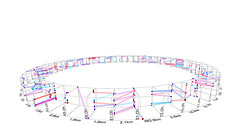 Google’s recently launched learning engine tries to predict the future. The prediction engine takes data and tries to guess at outcomes. It’s not quite that simple: you have to supply the engine with a set of training data, and it will then try to predict new data based on what it’s learned, using a supervised learning algorithm.
Google’s recently launched learning engine tries to predict the future. The prediction engine takes data and tries to guess at outcomes. It’s not quite that simple: you have to supply the engine with a set of training data, and it will then try to predict new data based on what it’s learned, using a supervised learning algorithm.
By offering this as a cloud service, Google has removed an obstacle for many startups. Learning engines can predict everything from future purchases to suspicious behavior, but growing them as the data set expands can be difficult. The prediction engine can be built into applications running in Google’s App Engine, for example, making it easy to experiment with machine learning at scale. While the data is anonymous, Google does benefit from improved algorithms as it learns what works and what doesn’t.
Following on the heels of Google’s investment in Recorded Future, it’s clear the company’s mission goes far beyond putting the world’s information at our disposal. But even if Google can show the world the future, will we change what we do?






 @
@ Tags:
Tags: 










 Like all images on the site, the topic icons are based on images used under Creative Commons or in the public domain. Originals can be found from the following links. Thanks to
Like all images on the site, the topic icons are based on images used under Creative Commons or in the public domain. Originals can be found from the following links. Thanks to